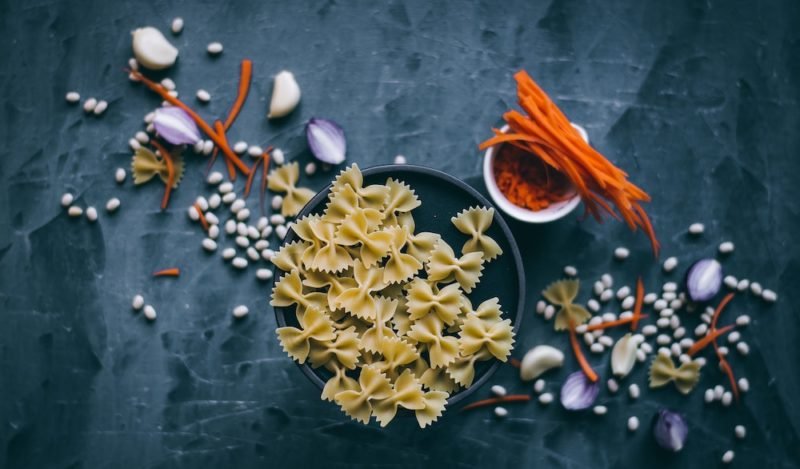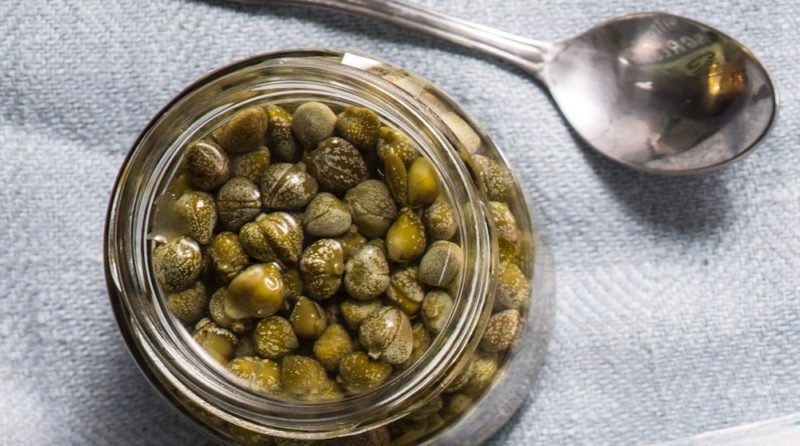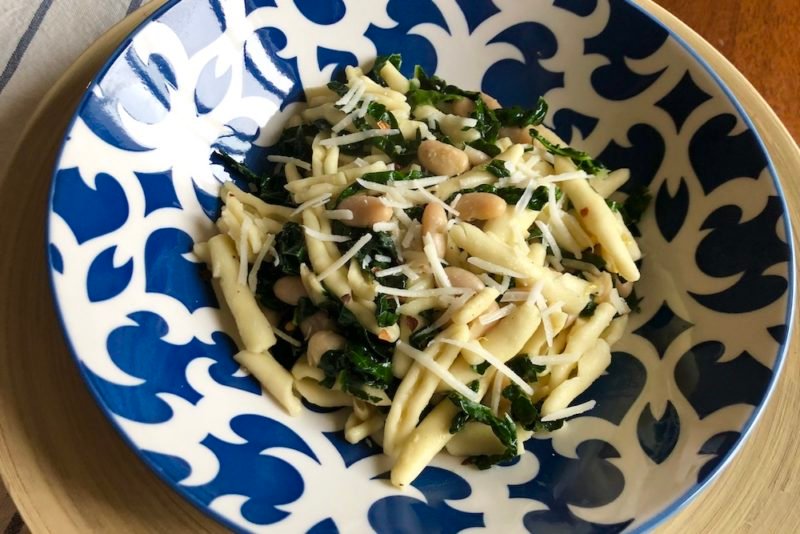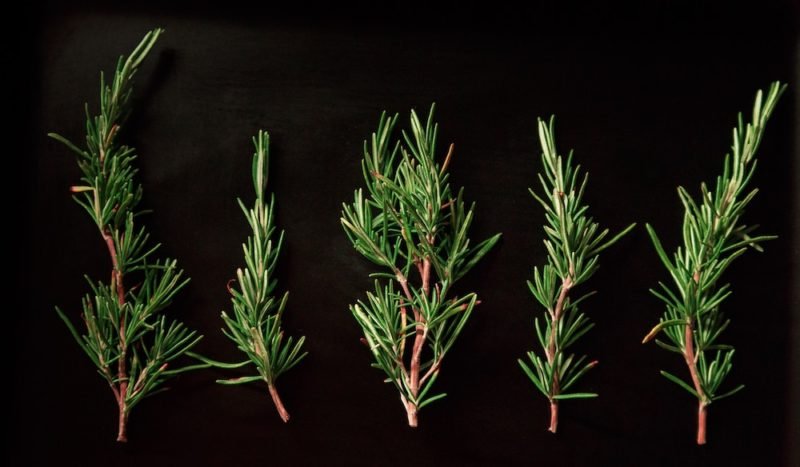
Are white beans the little black dress of the pantry? Maybe! They are quite versatile, and their pale color lets them blend into some recipes where the color bleed from red or black greens wouldn’t look so good.
White beans are a general term for cannellini beans (a white Italian kidney bean), great northern beans, and navy beans. While these beans are fairly interchangeable, most recipes will call for cannellini beans (unless it’s a recipe for navy bean soup!), and that’s generally the type of white bean you’ll find in cans. Lately, I’ve been using dried beans as much as possible, but I always—always—keep some canned white beans on hand for the 10 reasons I’m going to tell you about below. But first, some fun nutrition facts!
White bean Nutrition 411
White beans, along with other pulses (beans and lentils) are nutrient- and fiber-rich, contributing to good health in a number of ways.
They are a tidy package of both plant protein and “slow carbs,” which means that they contribute to a gentle rise and fall in your blood sugar (rather than the spike and crash you can get with refined sources of carbs) and steadier energy.
Their fiber contributes to both gut health—they’re source of prebiotic fiber, aka good food for your good gut microbes—and heart health, as eating pulses can help lower blood pressure and blood cholesterol. (If you have irritable bowel syndrome, you know all to well that beans may not be your best friend, but that doesn’t mean you don’t need fiber. Stay tuned for Thursday’s post for more on this topic, and fiber in general.)
A half-cup of cooked white beans is an excellent source of fiber (almost 7 grams), folate and iron, and a good source of protein (more than 9 grams), potassium and zinc. This—along with the health benefits I mentioned above—is why the USDA Dietary Guidelines for Americans recommends eating 1 ½ cups of pulses per week as part of a healthy eating pattern.
An easy way to meet that recommendation is to form a “Half-Cup Habit.” In other words, eat ½ cup of beans three times per week. How to do that? Just keep reading!

What to do with white beans
Before I get to three of my favorite white bean recipes, here are a few more tips and tricks for where you can slip in some white beans:
- Replace 1 cup flour in your blondie recipe with pureed white beans.
- Mix white beans with some garlicky sautéed greens and top with a fried egg and some grated Parmesan cheese for a nutritious breakfast.
- Replace half of the ricotta cheese in your lasagna with pureed white beans.
- Heat white beans, broth, canned diced tomatoes and chopped fresh greens or other veggies to make a quick soup.
- Toss white beans with cubes of fresh mozzarella, halved cherry tomatoes and chopped fresh basil, then finish with a drizzles of extra virgin olive oil and red wine vinegar, and salt and pepper to taste.
- Add mashed white beans to your mashed potatoes for a fiber and protein boost.
- Throw some on a salad. Boom…done!

Tuna and White Bean Salad (aka the Pantry Staple salad)
I feel like I talk about this non-recipe recipe all the time, but that’s because it has saved my metaphorical bacon on many, many occasions when I needed to bring my lunch to work but had not leftovers to rely on. Tuna and canned beans are pantry staples, and capers and Kalamata olives both last a LONG time in the refrigerator.
Serves 2
- 1 can tuna packed in olive oil (don’t drain!)
- 1 can white beans, drained and rinsed
- 2 tablespoons capers or quartered Kalamata olives
- A squeeze or two of fresh lemon juice (No lemons? Just leave it out.)
- Salt and freshly ground pepper to taste
- Salad greens
- Optional: Diced jarred roasted red peppers
Dump tuna into a bowl and break up with a fork. Add white beans and capers or olives and gently stir to combine. Add salt and pepper to taste, plus lemon and roasted peppers (if using), and gently combine again. Serve over salad greens.

Pasta with White Beans and Tuscan kale
Pasta, olive oil, lemon juice, kale and red pepper flakes are a classic pairings with cannellini beans. This dish has wonderful Italian flair, and is quick to throw together! If you want to add additional protein, throw in a can of tuna or some coarsely chopped walnuts.
Serves 4
- 12 ounces dry pasta
- Zest and juice from 1 lemon
- 2 tablespoons extra virgin olive oil
- 2 garlic cloves, peeled and coarsely chopped
- 6 ounces shredded Tuscan kale (about 4 cups)
- 1 (15.5-ounce) can cannellini beans, drained and rinsed
- ¼ teaspoon crushed red pepper flakes
- Salt and freshly ground black pepper, to taste
- Grated Parmesan cheese, for serving
- Cook pasta according to package directions. Reserve ½ cup of the pasta cooking water, then drain the pasta and set it aside. Add the lemon juice to the reserved pasta water.
- While the pasta cooks, heat the olive oil in a pan over medium heat. Ad the garlic and cook for about 1 minute, stirring. Add the beans and the shredded Tuscan kale and cook until the kale wilts, about 5 minutes.
- Add the pasta, lemon zest, red pepper flakes and ¼ cup of the reserved pasta water to the pan. Toss until everything is coated, adding more of the reserved liquid if needed. Season with salt and pepper to taste.
- Top with the grated Parmesan cheese and serve!

Rosemary-Garlic White Bean Hummus
I am a superfan of traditional chickpea (garbanzo bean) hummus, but sometimes it’s fun to mix things up. This white bean dip is more reminiscent of Italy or the south of France, and the pinch of cayenne gives it a nice little kick. Sautéing the garlic and rosemary in the olive oil first makes them very fragrant, but it also mellows the garlic a bit.
Makes about 2 cups
- ¼ cup extra virgin olive oil
- 2-3 large cloves garlic, peeled and coarsely chopped
- 1 tablespoon fresh rosemary, chopped
- 2 cans white beans, drained and rinsed
- 2 tablespoons lemon juice (you can also substitute red wine vinegar)
- 1 pinch cayenne pepper
- Salt and freshly ground pepper to taste
- Optional toppings/garnishes: chopped walnuts, chopped Italian (flat leaf) parsley, drizzle of olive oil, sprinkling of cayenne pepper, sprig of rosemary
- For serving: toasted baguette slices or pita bread (fresh or toasted) and raw veggies
- Heat olive oil in pan over medium heat. Add garlic and rosemary and sauté for about 2-3 minutes, stirring. You want the garlic to soften and become fragrant, but not to burn.
- Add all ingredients (except optional toppings) to a food processor, Vitamix or sufficiently powerful blender and blend on high until smooth and creamy. Add more salt and pepper if needed.
- If serving warm, add toppings right away and serve with toasted baguette slices.
- If serving cold, put in refrigerator for at least an hour. Before serving, add toppings. Serve with fresh or toasted pita bread (or pita chips) and raw vegetables.
More beanlicious resources
You can find a LOT more recipes for white beans and other pulses on the USA Pulses website. Make building the Half-Cup Habit easier by signing up for free recipes, tips and shopping lists. Their recipes are really good!






